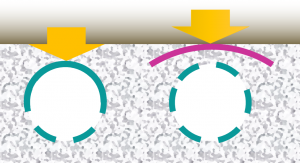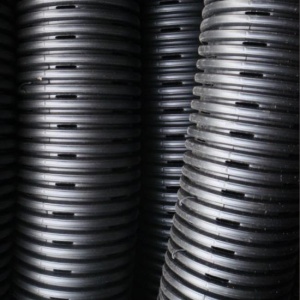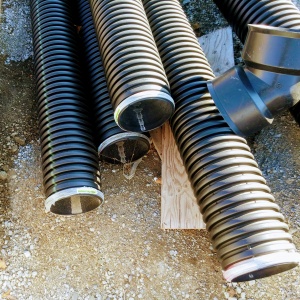Pipes
Revision as of 16:49, 15 July 2020 by Dean Young (talk | contribs)
Perforated pipes are a common component of underdrains used in bioretention, permeable pavements, infiltration trenches and exfiltration systems.
Pipes should have been manufactured in conformity with the latest standards by the Canadian Standards Association (CSA) or ASTM International.
- Perforated pipes should be continuously perforated, smooth interior HDPE (or equivalent material).
- Wherever possible pipes should be ≥ 200 mm internal diameter to reduce potential of freezing and to facilitate inspections and maintenance with a push camera.
- Smooth interior facilitates inspection and maintenance activities; internal corrugations can cause cameras or hydrojetting apparatus to become snagged.
- A perforated pipe with many rectangular slots has better drainage characteristics than a pipe with similar open area provided by fewer circular holes [1].
- Non-perforated pipes should be used for conveyance to and away from the facility, including overflow. It is good practice to extend the non-perforated pipe approximately 300 mm within the reservoir or practice to reduce the potential for native soil migration to clog the pipe at the interface.
See also: Flow through perforated pipe
- ↑ Hazenberg, G., and U. S. Panu (1991), Theoretical analysis of flow rate into perforated drain tubes, Water Resour. Res., 27(7), 1411–1418, doi:10.1029/91WR00779.


